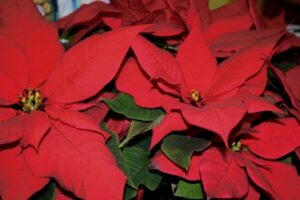Holiday Plants
go.ncsu.edu/readext?755940
en Español / em Português
El inglés es el idioma de control de esta página. En la medida en que haya algún conflicto entre la traducción al inglés y la traducción, el inglés prevalece.
Al hacer clic en el enlace de traducción se activa un servicio de traducción gratuito para convertir la página al español. Al igual que con cualquier traducción por Internet, la conversión no es sensible al contexto y puede que no traduzca el texto en su significado original. NC State Extension no garantiza la exactitud del texto traducido. Por favor, tenga en cuenta que algunas aplicaciones y/o servicios pueden no funcionar como se espera cuando se traducen.
Português
Inglês é o idioma de controle desta página. Na medida que haja algum conflito entre o texto original em Inglês e a tradução, o Inglês prevalece.
Ao clicar no link de tradução, um serviço gratuito de tradução será ativado para converter a página para o Português. Como em qualquer tradução pela internet, a conversão não é sensivel ao contexto e pode não ocorrer a tradução para o significado orginal. O serviço de Extensão da Carolina do Norte (NC State Extension) não garante a exatidão do texto traduzido. Por favor, observe que algumas funções ou serviços podem não funcionar como esperado após a tradução.
English
English is the controlling language of this page. To the extent there is any conflict between the English text and the translation, English controls.
Clicking on the translation link activates a free translation service to convert the page to Spanish. As with any Internet translation, the conversion is not context-sensitive and may not translate the text to its original meaning. NC State Extension does not guarantee the accuracy of the translated text. Please note that some applications and/or services may not function as expected when translated.
Collapse ▲ When we speak of holiday plants, these are among the most popular that come to mind: Poinsettia, Mistletoe, and Christmas Cactus. Some may have wondered how they came to be the symbol of Christmas.
When we speak of holiday plants, these are among the most popular that come to mind: Poinsettia, Mistletoe, and Christmas Cactus. Some may have wondered how they came to be the symbol of Christmas.
Poinsettia
Poinsettia originated from Southern Mexico and was named after Joel Roberts Poinsett, the first U.S. ambassador to Mexico in the 1800s, who brought the specie to the states. The bright red part which are usually mistaken as flowers are actually leaves. That is why it used to be known as the “painted leaf”. It’s flowers are yellow to green at the center of the plant.
This plant has become of great significance during Christmas season, because the legends say that a poor girl had nothing to offer for the holidays and so an angel appeared before her. She was told to grab the weed which she offered and it turned to the bright red color. Accordingly, it symbolizes the blood of Christ.
Mistletoe
Mistletoe has become the holiday romantic symbol due to the kissing custom associated with it. Mistletoe is a parasitic plant that lives on trees. As such, it steals the nutrients of its host plant. While today it is more known because of romantic tradition, it used to be popular as a healing herb thousands of years ago. It has been known to exist for a long time and has been deemed to be essential to a healthy ecosystem.
It is said that in Norse Mythology, Odin’s son Baldr dreamed of his early death. His mother, Frigg, in turn asked all the animals and plants not to harm Baldr, only the mistletoe. Loki, the trickster God, shot Baldr from the mistletoe. He could not be revived for days but was only resurrected through the power of Frigg’s tears. She was overjoyed that she made mistletoe the symbol of love and hope, and everyone who passes under it should receive a kiss.
Christmas Cactus
Christmas Cactus came from the coastal mountains of southeastern Brazil. This plant belongs to the genus Schlumbergera.
Its tale is said to be that a missionary priest named Father Jose went to Bolivia to spread Christianity. However, despite his good works, the people still did not believe in Christmas. He was praying at the altar on Christmas Eve when he heard the people singing the song he had taught them and children coming his way were bringing flowers. These flowers are what we know now as Christmas Cactus. This plant symbolizes faith and hope.
Written by: Aimee Jarrels, Extension Master Gardener℠ Volunteer in Pender County
Learn more:



